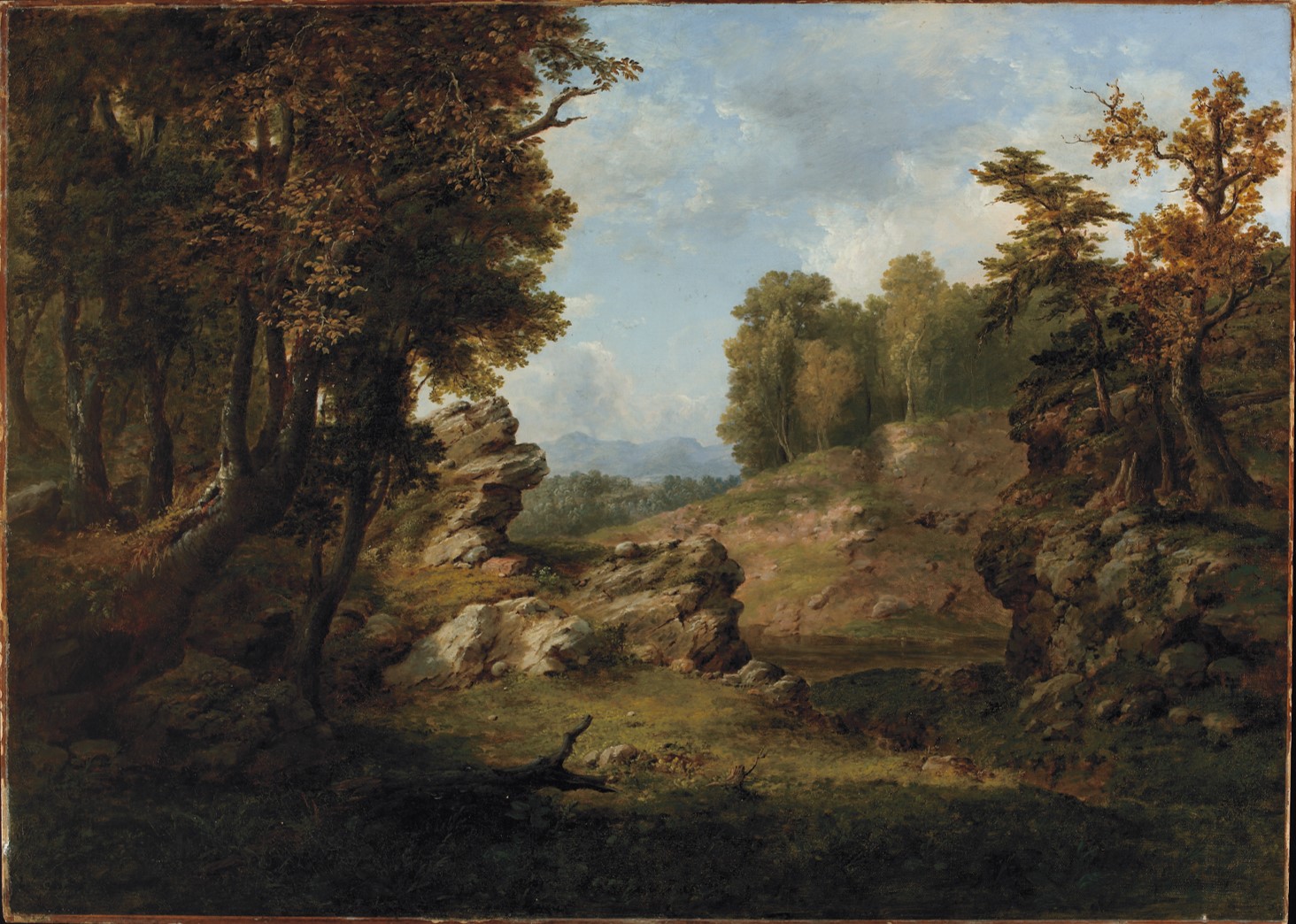George Inness (1825-1894) is often considered the premier landscape painter of the nineteenth century. He suffered from epilepsy as a young boy, causing him to struggle in school and eventually drop out at a young age to apprentice at his father’s grocery store in Newburgh, New York. Working for his father was a short-lived pursuit; Inness had always been far more interested in following his passion for art. Though mildly disappointed in his son’s choice to pursue art instead of the family’s grocery business, Inness’s father supported his studying with local painters, who quickly found that the boy’s skills were already beyond their teachings. As an artist that rose to prominence in the mid-nineteenth century, Inness drew inspiration from the Hudson River School, a group he first encountered through paintings by two of the group’s most prominent figures: Thomas Cole and Asher B. Durand. Founded by Thomas Cole, the Hudson River School was a group of New York-based landscape painters inspired by the pristine landscapes of the Northeast and the American West as well as the philosophy of transcendentalism, the belief that divinity and spirituality exist in all facets of nature.[1] Their paintings portray meticulously rendered majestic landscapes suffused with heavenly, ethereal light. Painted in 1849, Inness’s A Nook Near Our Village reflects these characteristics. Bright sunlight cascades into the center of the painting, evoking a subtle spiritual presence in a landscape untouched by humanity. In 1851, Inness made his first of many trips abroad, visiting Italy and France, where he saw work by the Barbizon School.[2] A group of French landscape painters named for the village of Barbizon, where many of them congregated to paint in the nearby Forest of Fontainbleau, the Barbizon School worked in a different style from the Hudson River School. While still documenting unspoiled landscapes, the Barbizon School painted with looser brushwork and more subtle colors, creating paintings with a soft, tonal quality. This style offered a refreshing break for Inness, allowing him more creativity and freedom in his work.[3] A Nook Near Our Village is currently on display in Time Returns: A Continuous Now through August 4, 2019.
-Paige Nelligan, Curatorial Intern, and Steffi Chappell, Assistant Curator
[1] Kevin J. Avery, “The Hudson River School,” in Heilbrunn Timeline of Art History, New York: The Metropolitan Museum of Art, 2004.[2] Adrienne Baxter Bell, “George Inness (1825-1894),” in Heilbrunn Timeline of Art History, New York: The Metropolitan Museum of Art, 2012. [3] Bell, “George Inness.”


